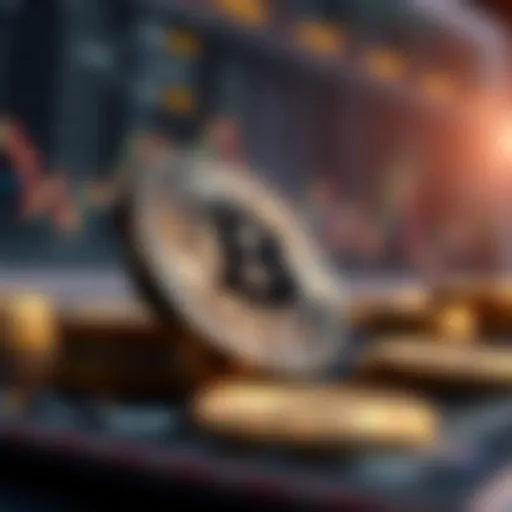NFT Art Creation: Navigating the Digital Canvas
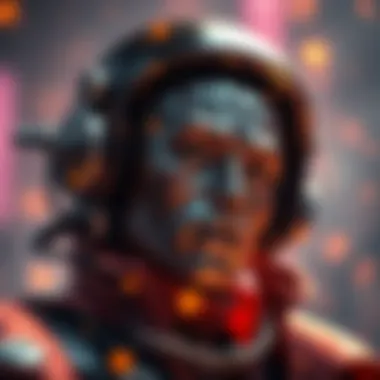

Intro
As the digital age unfolds, artists find themselves at a curious crossroad. The rise of NFT art is reshaping how creations are perceived, owned, and traded. It all starts with the concept of cryptocurrency, the backbone of this new artistic frontier. Understanding this landscape is vital for both artists and investors who seek to thrive in the evolving domain of online art.
NFTs, or Non-Fungible Tokens, are distinct from cryptocurrencies like Bitcoin or Ethereum, which can be exchanged on a one-to-one basis. NFTs represent ownership of a unique item or piece of art. They have grabbed the limelight with their promise of transforming how we view ownership—no longer bound by physical restrictions, ownership can be traced through blockchain technology. With the allure of scarcity, artists are now able to tap into a whole new avenue for their work, allowing creativity to flourish like never before.
This article will deliver a detailed overview of NFT art creation, walking you through essential aspects that one could encounter along this journey. From examining the tools and platforms that artists use, to the economic considerations that come with the territory, we aim to provide profound insights suitable for artists, investors, and tech enthusiasts alike.
By the end of this piece, you should gain a solid grounding in NFT art creation and its implications, enabling you to navigate this brightly lit digital canvas with confidence.
Understanding NFTs and Digital Art
In this rapidly evolving digital landscape, grasping the nuances of NFTs and digital art is not just a luxury but a necessity. As technology continues to shape creative expression, NFTs serve as a bridge between traditional art forms and modern expressions. They offer artists, investors, and collectors a new realm of opportunities, making it crucial to understand their implications and potential.
To begin with, NFTs, or Non-Fungible Tokens, provide a way to assert ownership over digital creations by utilizing blockchain technology. This allows for proof of authenticity and provenance in a world where digital copies can often be indistinguishable from the originals. The significance of this cannot be understated, as it addresses long-standing issues surrounding art theft and copyright violations.
Furthermore, the intertwining of art and technology has created new arenas for creative exploration. Artists can experiment with interactive elements and immersive experiences that are impossible in the traditional art spectrum. This evolution not only democratizes art-making but also transforms how we value and interact with art.
Why Understanding This Topic Matters:
- It equips artists with the knowledge required to navigate a peak period of digital creativity.
- Investors can make informed decisions based on a clear understanding of market dynamics.
- Educators will find this information vital as they tailor their curriculum to the needs of future generations.
- Tech enthusiasts can explore the implications of blockchain technology beyond monetary transactions.
In summary, a deep dive into the intersection of NFTs and digital art is more than an academic exploration; it is a comprehensive guide for all players in this evolving ecosystem. As we peel back the layers, each twist and turn reveals the complex, intricate tapestry that defines this new frontier.
The Role of an NFT Art Creator
The proliferation of NFTs has redefined the landscape of art creation and collection, thrusting NFT art creators into the limelight. This role is not simply about artistry; it encompasses a myriad of responsibilities, skills, and a profound understanding of digital ecosystems. As technology evolves, so does the expectation placed on artists to not only produce compelling art but also to navigate the complexities of digital ownership and market dynamics. It's a balancing act of creativity and strategy, where a creator's success hinges on their ability to blend technical know-how with an inventive vision.
Skills and Expertise Required
To thrive as an NFT art creator, a diverse skill set is paramount. First and foremost, proficiency in digital art software is non-negotiable. Familiarity with tools like Adobe Creative Suite or Blender can empower artists to craft visually stunning pieces. But technical skills alone won’t cut it; a sound understanding of blockchain technology is equally essential. Creators should know how NFTs function, from smart contracts to minting processes. This technical foundation allows artists to ensure their works are secure and that ownership is clearly delineated.
Moreover, effective communication skills play a pivotal role. Engaging with collectors, peers, and online communities creates networks that can lead to collaborations and sales. Understanding the nuances of social media marketing can amplify reach, creating a buzz about new releases and building a dedicated following. Additionally, a keen sense for trends is invaluable in staying ahead of the curve. Gone are the days where sticking to traditional art practices sufficed; today’s creators must stay attuned to the rhythms of both the art world and the digital marketplace.
- Technical Skills: Proficiency in digital art tools, understanding blockchain.
- Communication Abilities: Networking, community engagement.
- Market Awareness: Following trends and adapting to changes.
Creative Processes and Inspiration
The journey from concept to cration in NFT art is often a rollercoaster, filled with inspiration and exploration. Artists may draw inspiration from myriad sources: the world around them, personal experiences, or even abstract concepts. It's the blending of these elements that leads to unique artwork that resonates—both emotionally and intellectually—with the audience.
Many creators engage in a research phase, immersing themselves in current trends, cultural movements, or even technological advancements. This practice doesn’t simply serve to inspire; it informs their work's relevance in the rapidly-changing NFT landscape.
Once inspiration strikes, the creative process typically involves sketching ideas and refining them with digital tools. Iteration is key; artists might experiment with various styles or themes before settling on their final piece. Collaboration can enrich this phase, as exchanging ideas with fellow creators can lead to unexpected results.
"The true magic lies in the blending of personal expression and technical prowess, creating art that challenges the viewer and invites interaction."
Furthermore, the ability to tell a story through art is crucial. Each piece should have a narrative, whether it's a commentary on society, a personal memoir, or an exploration of new technology. This story not only captivates viewers but also adds a layer of depth that encourages collectors to invest not just in an image, but in an experience.
In summary, the role of an NFT art creator is multifaceted, requiring a blend of artistic talent, technical expertise, and a strong grasp of the market. As traditional boundaries of art dissolve in the face of technological advances, NFT creators stand at an exciting crossroads, ready to redefine what art means in the digital age.
For further reading regarding NFTs and their implications in art, consider visiting Wikipedia and Britannica.
Engage with the community on platforms such as Reddit or explore discussions on Facebook to delve deeper into the world of NFT art.
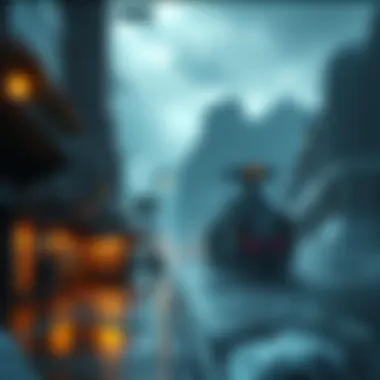

Tools and Platforms for NFT Art Creation
When diving into the world of NFT art creation, understanding the tools and platforms available is like having the right compass for navigation in uncharted waters. The journey of transforming a digital canvas into a saleable NFT is both an art and a science, where the right tools can fortify an artist's vision into a commercially viable masterpiece. In this section, we will break down the essential software needed for creation and the marketplaces designed for selling these digital assets.
Software Essentials
Creating NFT art starts with the right software. Just like an artist wouldn't pick up a paintbrush without proper paint, digital creators need powerful applications to express their creativity. Here are some crucial software options:
- Adobe Photoshop: This widely recognized software remains a staple for digital artists, providing tools for detailed image manipulation, layering, and effects.
- Procreate: Exclusive to iPad users, Procreate has gained attention for its intuitive interface and vast range of brush capabilities, allowing for fine artistry on a tablet.
- Blender: For artists delving into 3D art, Blender offers an open-source platform for creating dynamic models and animations, giving NFT art a unique dimension.
- Cinema 4D: Ideal for 3D motion graphics, this software is perfect for those looking to add intricate design elements and animations to their NFTs.
Each of these tools enables artists to refine and finalize their work before taking the next crucial steps. Proper software selection not only impacts the quality of the art but also its compatibility with NFT standards such as ERC-721 or ERC-1155.
Marketplaces for Selling NFTs
Once an artist has crafted their digital work, they need a platform to sell their creations. Choosing the right marketplace is crucial, as it can affect not only visibility but also the overall success of the sale. Some notable platforms include:
- OpenSea: As one of the largest NFT marketplaces, OpenSea allows users to mint, buy, and sell a broad range of NFTs, covering digital art, music, and other collectibles.
- Rarible: This platform empowers creators to publish and sell their own NFTs and offers a user-friendly interface, although it emphasizes community governance, giving users a vote on changes and policies.
- Foundation: Focusing on artist curated collections, Foundation is an invite-only platform which elevates exclusivity, making it appealing to collectors looking for unique art.
- SuperRare: Targeted primarily at high-end collectors, SuperRare features limited editions of NFT art, attracting a sophisticated audience willing to invest in premium works.
Each marketplace comes with its own set of fees, visibility options, and community standards, making the selection process pivotal. Failing to choose a fitting platform can limit market reach or complicate transactions unnecessarily.
An artist's choice of software and marketplace can be the difference between creating a token that gets lost in the digital ether or one that resonates with collectors and investors alike.
While the tools and platforms discussed here are just the tip of the iceberg, they represent a vibrant ecosystem that's continually evolving. Digital artists must stay abreast of both software advancements and marketplace trends to remain competitive in this fast-paced art revolution.
For further insights and comprehensive guides, you might find resources at Wikipedia, Britannica, or discussions on Reddit to deepen your understanding of the NFT landscape.
Economic Considerations in NFT Art
The realm of NFT art isn’t just about creativity and technology; it places a strong emphasis on economic dimensions that shape the artist’s journey in the digital marketplace. As more creators enter this space, understanding the financial implications becomes essential. This includes grasping how digital artwork is priced, the revenue streams available through royalties, and how these elements interact with market demand. Artists need to make informed decisions to sustain their practices and thrive in an increasingly competitive ecosystem.
Pricing Strategies for Digital Art
Setting the right price for digital art is no small feat. Artists must strike a balance that reflects their creativity while considering the market's willingness to pay. A few strategies often come into play:
- Cost of Creation: Artists should take into account the time, resources, and skills spent on their projects. The price must at least cover these if they are aiming for sustainability.
- Rarity and Exclusivity: The concept of scarcity in digital art can drive prices up. An artist might create limited editions of a piece, making it more desirable. For instance, if an artist releases only five pieces of a specific artwork as NFTs, this kind of strategy can invoke a bidding war among collectors.
- Market Research: Understanding comparable pieces in the market is crucial. Artists are encouraged to research prices of similar works on platforms like OpenSea or Rarible. Keeping tabs on which pieces sell well can provide insights into current trends and pricing benchmarks.
- Flexible Pricing: Some artists opt for tiered pricing based on their audience. They might offer prints for less to attract more buyers, while maintaining a higher price for exclusive one-of-a-kind digital assets.
Ultimately, the goal is to establish a pricing approach that resonates with the creator’s brand while being attractive enough to collectors.
Understanding Royalties
Royalties in the NFT format provide a direct source of ongoing income for artists, which is quite different from traditional art markets. This economic model is revolutionary, allowing creators to earn money not just from the initial sale of their artworks, but also from subsequent sales in the secondary market. Here are key points about this important aspect:
- Setting Up Royalties: Artists typically determine a percentage of each resale—often ranging from 5% to 10%—which can significantly contribute to their earnings over time. Platforms like Foundation or SuperRare automate this process, ensuring that creators get their share without extra effort.
- Chain Transparency: Since NFTs live on a blockchain, the ownership history is transparent. This means artists can easily track when and how often their work changes hands, providing valuable insights into their valued creations.
- Empowerment of Artists: This royalty system transforms the economic landscape for creators. They are no longer just one-time sellers; they become investors in their own work, participating in the long-term appreciation of their creations.
Legal Framework Surrounding NFTs
The conversation around non-fungible tokens (NFTs) extends beyond mere creation; it delves into intricate legal waters that affect creators and collectors alike. Understanding the legal framework surrounding NFTs is crucial, as these digital assets challenge traditional notions of ownership and copyright. Navigating this landscape can protect creators from potential pitfalls while also helping buyers make informed decisions about their digital acquisitions.
Intellectual Property Rights
When we talk about NFTs, it’s essential to start with intellectual property (IP) rights. Essentially, these rights give creators control over their work and dictate how it can be used, distributed, or sold. In the world of digital art, an NFT does not automatically confer copyright to the buyer. Instead, the creator retains certain rights unless explicitly transferred. This distinction is significant because buyers need to do their homework, ensuring they fully understand what rights they are acquiring with their NFT.
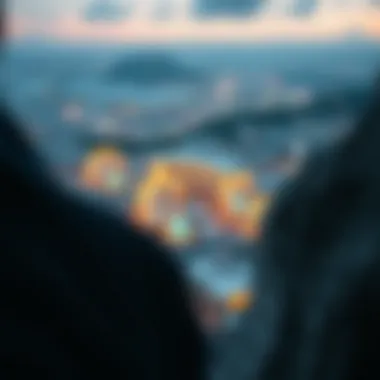

- Ownership vs. Copyright: Simply purchasing an NFT doesn’t mean you own the IP of the artwork. Most creators retain the right to reproduce their work or create derivative pieces based on it. Buyers should always check the terms associated with the NFT to clarify what rights are included.
- Moral Rights: Depending on jurisdiction, artists may have moral rights that protect their personal reputation and the integrity of their work. Even if someone owns the NFT, they might not be allowed to alter the original art or use it in a way that could damage the reputation of the creator.
In a world where digital art can be easily replicated, understanding how IP rights work helps creators safeguard their creations. Websites like WIPO provide valuable resources on IP rights that can help artists navigate the legalities.
Licensing in the NFT Space
Licensing within the NFT ecosystem introduces another layer of complexity. As NFTs evolve, creators must consider how they want to license their art. This can include various paths such as full rights transfers, non-exclusive licenses, or specific use cases. Artists can benefit tremendously from clear licensing agreements, which outline how buyers can use the art and any limitations that may be in place.
- Types of Licenses:
- Exclusive License: Grants the buyer exclusive rights to use the digital art in specified ways, removing the creator's ability to sell or license the same piece in the same context.
- Non-Exclusive License: Allows multiple buyers to use the same art piece, which can maximize exposure for the artist but may lessen perceived value.
- Sub-Licenses: In some cases, artists might permit buyers to sub-license their NFTs, leading to broader use while maintaining some control.
A well-thought-out licensing agreement can prevent future disputes and clarify the scope of use for buyers, which is increasingly valuable as NFT marketplaces expand. Platforms like ArtStation and Foundation often have resources or guidelines for creators to navigate this aspect of NFT creation.
Clarifying rights and licensing terms can safeguard both artists and collectors, ensuring smoother transactions and fostering a healthier digital art ecosystem.
The Impact of NFTs on the Art World
The impact of NFTs on the art world is not just a flash in the pan; it's a reshaping of how art is created, sold, and perceived. Non-fungible tokens have burst onto the scene, opening up a new avenue for artists and collectors alike. This section explores how NFTs are influencing the dynamics of the art market, alongside the distinct challenges faced by artists rooted in traditional practices.
Shifts in Market Dynamics
The arrival of NFTs has altered the landscape of art sales in ways that many could not have predicted. In contrast to the traditional art market, which often hinges on gallery representation and physical exhibitions, the rise of NFTs enables artists to reach a global audience directly. No longer are they at the mercy of middlemen; they can retain a larger share of their revenue by selling their art on various online platforms like OpenSea and Rarible.
These platforms have disrupted the status quo, allowing for more affordable sales options and accessibility for budding creators. As a result, artists are trying out different styles, pushing boundaries, and not being confined by the limitations of the physical gallery space. You see creators experimenting with interactive elements or incorporating multimedia on blockchain, creating a riveting experience for collectors and art lovers.
"The emergence of NFTs has democratized the art market, giving a voice to the artists who might've remained unheard in traditional systems."
Moreover, the uniqueness of NFTs allows for a digital art ownership model that never existed before. Each token holds a record of ownership, making digital art verifiably scarce in a way that was previously challenging. This scarcity drives the value perception of digital artwork, making it attractive for collectors and investors. These shifts lead to fluctuating values, making it both an exciting and volatile market.
Challenges Faced by Traditional Artists
While NFT art creation offers immense opportunities, it also brings significant challenges, especially for artists entrenched in traditional methods. One major hurdle is the technological gap. For many seasoned artists, adapting to the digital landscape may feel like climbing a mountain in flip-flops. It requires learning new skills in areas like blockchain technology and digital production, which can be daunting.
Additionally, the perception of value in art has been fundamentally altered by the rise of NFTs. Traditional artists often find it difficult to navigate a space where digital art, sometimes seen as less prestigious, competes with physical pieces. This has created a rift, with some collectors prioritizing NFTs over traditional artworks, potentially undermining the established creators' markets.
The issue of authentication also surfaces, as plagiarism and forgery become more prevalent in the digital environment. Without a strong legal framework globally, traditional artists might find their works replicated and minted as NFTs without consent, making it imperative for them to safeguard their intellectual property.
Best Practices for NFT Art Creators
In the expanding panorama of NFT art, established practices can give aspiring creators a solid ground to build upon. Navigating this digital domain without a sense of direction can be like trying to find a needle in a haystack. Adopting best practices not only streamlines the creative process but also prepares artists to face the challenges and uncertainties that arise in this evolving landscape. These practices can offer various benefits—from visibility in crowded marketplaces, to fostering sustainable engagement with collectors and communities.
Building an Online Presence
Establishing a robust online presence is akin to setting up a virtual storefront that invites visitors to step in and explore. Artists can use a blend of social media platforms, personal websites, and digital portfolios to showcase their work. Each platform has its unique charm. For instance, Instagram is visually driven, making it an ideal place to share eye-catching artwork. On the other hand, platforms like Twitter can serve as avenues for engaging conversations about digital art and NFTs.
- Create a personal website: This should act as a hub for your NFT art. Include an artist statement, a curated gallery of your pieces, and links to your social media profiles.
- Leverage social media: Utilize platforms like Instagram, Twitter, and LinkedIn. Keep your audience engaged with regular updates on your creation processes and new pieces.
- Join NFT marketplaces: Being part of established platforms like OpenSea or Rarible not only enhances credibility but also puts your work in front of potential buyers.
In this digital climate, staying consistent with content can make all the difference. Regular updates keep your audience engaged, much like how a riveting podcast hooks listeners week after week. Mixing behind-the-scenes looks with finished pieces provides depth to your narrative, allowing followers to connect with your creative journey.
Engaging with Communities and Collectors
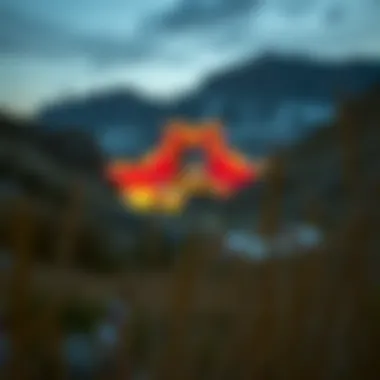

Engagement with communities goes beyond merely posting artwork. This means diving into discussions, supporting fellow artists, and actively participating in NFT discussions—essentially being a good neighbor in the digital art community. Collectors are not just buyers; they are the advocates who can champion your work.
- Take part in online forums: Participating in discussions on platforms like Reddit can open up opportunities to connect with fellow artists and collectors.
- Network at virtual events: Attend online galleries or NFT expos. These gatherings often feature discussions or panels, which can be a great way to forge relationships.
- Utilize Discord: Many NFT projects and communities have Discord servers. Engaging in these spaces allows artists to connect more deeply with collectors and peers.
Building relationships with collectors is paramount. Make sure to communicate openly, whether it’s through direct messages or during live events. This personal approach creates a sense of trust, which, in turn, can lead to repeat sales and long-term support for your artistic endeavors.
"In the NFT space, relationships mean everything. It’s not just about selling a piece; it’s about fostering a community that supports your vision and art."
Navigating the tides of NFT art creation requires not just creative prowess but also strategic engagement in your online and community presence. By implementing these best practices, artists can effectively lay down the groundwork for a thriving career in the digital art landscape.
Future Trends in NFT Art
The landscape of NFT art is continuously morphing, driven by the rapid pace of technology and shifting societal attitudes towards digital ownership. Understanding these future trends isn't just a pursuit for enthusiasts; it’s crucial for investors, creators, and educators alike. With each wave of innovation, new opportunities emerge, making it essential for stakeholders to keep their fingers on the pulse of these developments.
Technological Innovations on the Horizon
As we peer into the future, the technological innovations shaping NFT art promise to redefine the boundaries of creative expression and ownership. Here are some potential game-changers:
- Interoperability: The ability for NFTs to be used across various platforms and metaverses could revolutionize how art is showcased and sold. Imagine owning an NFT that can seamlessly transition between different virtual spaces, from a digital gallery to a gaming environment.
- Augmented Reality (AR) and Virtual Reality (VR): The integration of AR and VR with NFT art could provide immersion that traditional mediums can only dream of. Artists might soon create multi-layered experiences, where viewers can walk through and interact with artworks in real time and space, offering a unique perspective.
- AI-driven Art Creation: The rise of artificial intelligence in generating art can challenge traditional notions. AI tools can help create complex digital pieces, considering audience preferences, market trends, and even merging styles from various genres. This might push artists to redefine their creative process and the very meaning of artistry.
“The future belongs to those who believe in the beauty of their dreams.” — Eleanor Roosevelt
This sentiment rings particularly true within the evolving NFT sphere. Artists who embrace new technologies and tools stand to benefit immensely.
- Blockchain Scalability: Current blockchain infrastructures face limitations like high transaction fees and slow processing times. Future advancements may lead to more scalable solutions, allowing creators to mint and sell NFTs at lower costs without sacrificing security.
Emerging Markets for Digital Art
The expansion of emerging markets for digital art is another trend worth noting. As global interest in NFTs grows, several developing regions are making strides in digital creativity and economics.
- Asia: Particularly in nations like Singapore and South Korea, digital art is witnessing a renaissance. With a tech-savvy population and increasing investments in digital art platforms, these markets are becoming hotbeds for NFT trading and creation.
- Latin America: Artists from Latin America are also gaining traction in the NFT space. Initiatives that support local creators, combined with an increasingly enthusiastic buyer base, may see exceptional growth in this region.
- Africa: African artists are beginning to tap into the digital art market, often using NFTs to bypass traditional sale methods and connect with global audiences. This may open the door for a diverse range of perspectives and styles to enter the digital art world.
Closure: The Evolution of Digital Art
The conclusion of this exploration into NFT art creation encapsulates not just the myriad of lessons learned along the way, but also lays the groundwork for the future trajectory of digital art. As we stand at this intersection of creativity, technology, and commerce, the significance of recognizing how these elements work together cannot be overstated.
In this article, we have delved into the pivotal aspects of NFT art, from understanding the basic intricacies of non-fungible tokens to the profound impact they have on artists, collectors, and the broader art community. The evolution of digital art in the era of NFTs brings forth unique challenges and opportunities that redefine ownership and value in ways previously thought impossible.
Summary of Key Insights
Throughout the sections discussed, certain takeaways stand out:
- NFTs as a Game Changer: Non-fungible tokens have revolutionized art ownership by providing a method for artists to receive royalties from secondary sales.
- Digital Canvas Tools: Various tools and platforms enable artists to create, showcase, and sell their digital work, each offering distinct functionalities that cater to different needs.
- Market Dynamics: The rise of NFTs has altered the traditional art market, creating a space where digital artists can thrive, but also where market speculation may lead to unpredictable outcomes.
These insights reveal the multifaceted nature of NFT art and the broader implications it holds not just for creators but also for the investors and collectors navigating this digital landscape. By embracing these changes, artists can carve out new pathways for success.
The Ongoing Journey for Creators
Moving forward, it’s essential to understand that the journey for NFT art creators is ongoing and ever-evolving. Artists aren't just digital producers; they are innovators navigating this new terrain. They must remain adaptable, as both technology and market preferences continue to shift.
Key considerations include:
- Continuous Learning: Keeping abreast of new tools, trends, and changes in market behavior is vital. For instance, engaging with communities on platforms like Reddit or Discord can provide invaluable insights.
- Networking and Collaboration: Building relationships with other artists, collectors, and industry players can open doors to collaborations and greater exposure.
- Experimentation and Risk: The willingness to experiment with new concepts and ideas will separate those who succeed from those who don’t. The beauty of digital art lies in its capacity for innovation.
Artists are not merely passive participants in the NFT space; they are trailblazers shaping what is yet to come. The evolution toward an inclusive digital art world still has a long way to go, and the role of the creator will continue to be pivotal as this narrative unfolds. As technology advances, the potential for artistry within the digital realm only expands, promising tantalizing opportunities for those brave enough to seize them.
"In the digital age, we must redefine the brush strokes of creation and the palette of expression." - Unknown
As this conversation around NFT art continues, the insights provided here should guide not only artists but also investors, educators, and tech enthusiasts in their understanding of the digital canvas that is evolving at an unprecedented pace.

